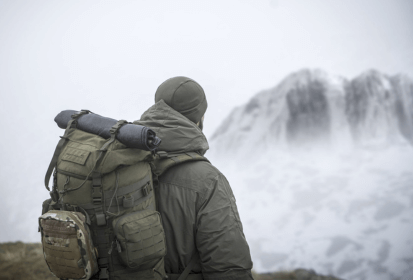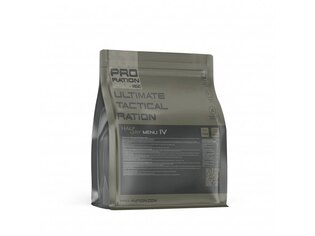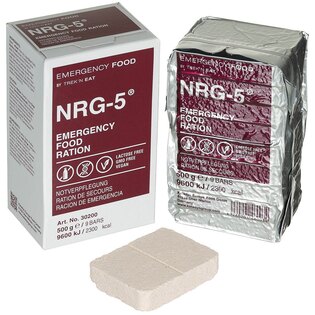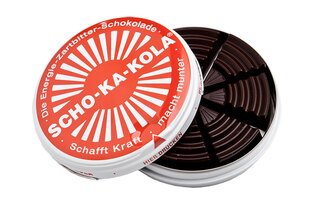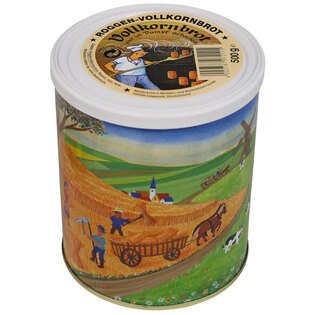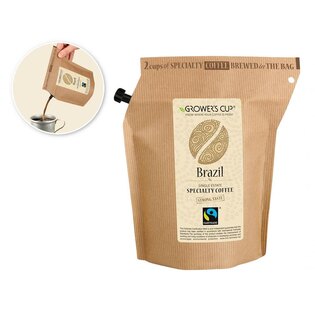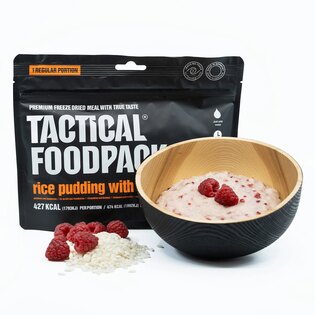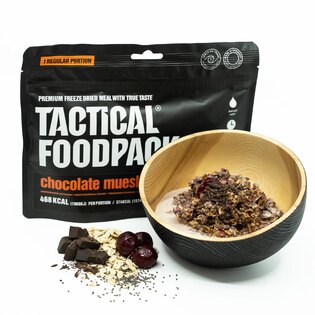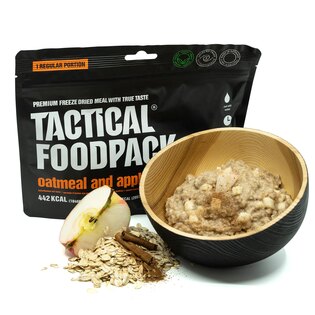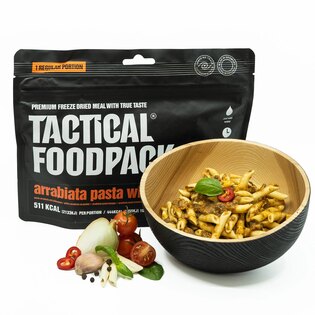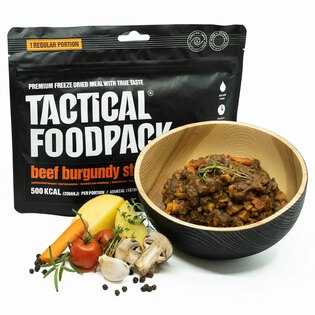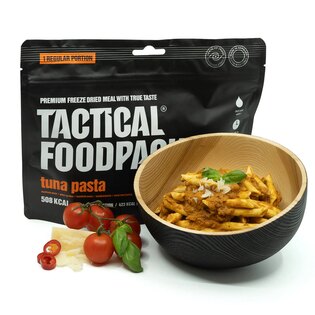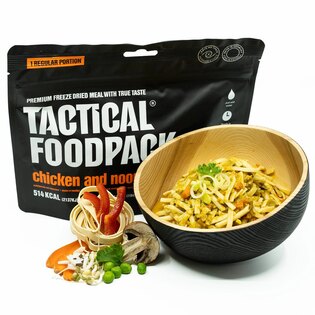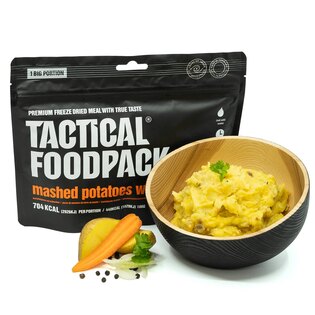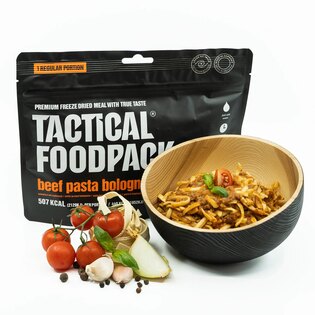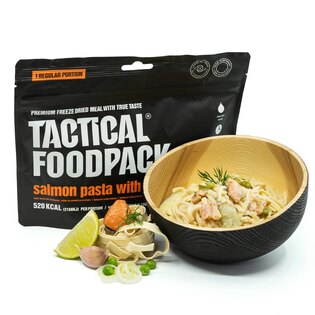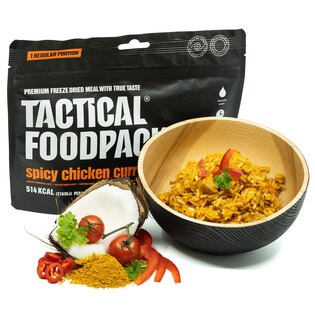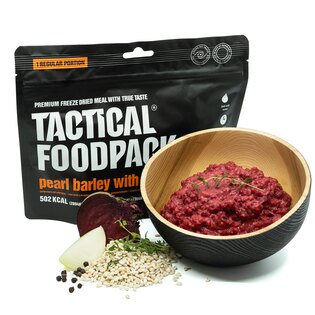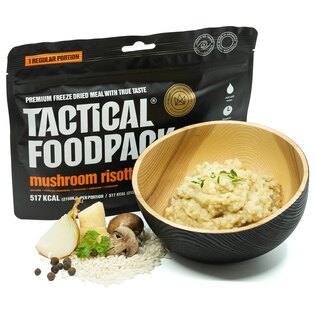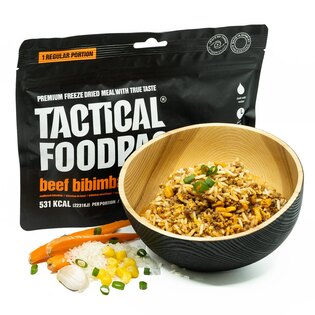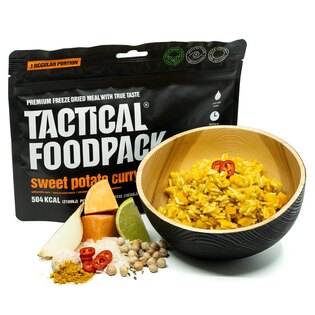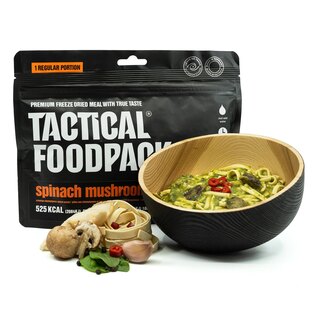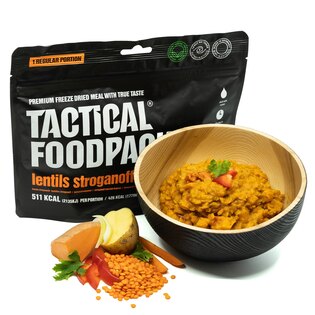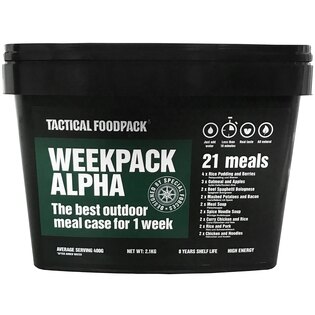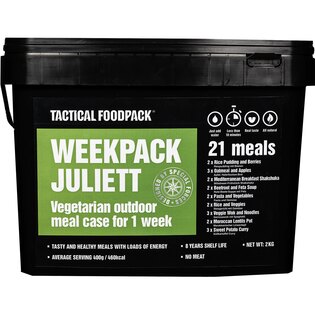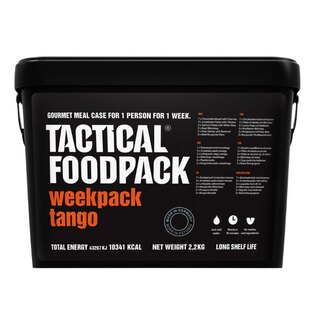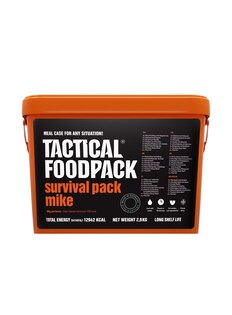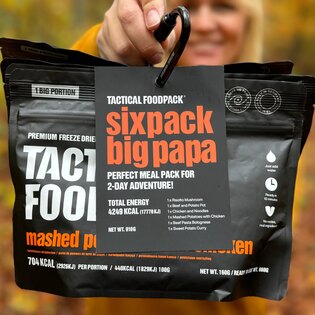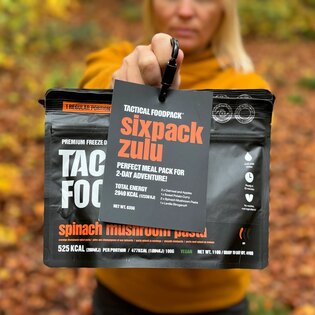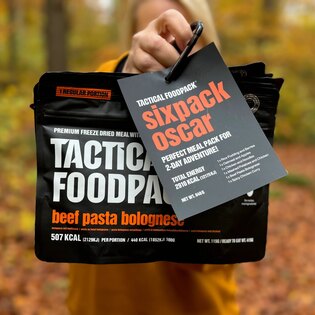72-Hour Self-Sufficiency – Emergency Food and Water
Imagine going three days without electricity, running water, or access to stores. Most people first think of lights or heating. But in reality, without water or calories, Wi-Fi becomes the least of your concerns. This guide walks you through how to think about emergency food and hydration—calmly, practically, and without fear-mongering.
A power outage means: no lights. Then, no heating. Stores stop accepting cards. The fridge turns into a warm cabinet. After a day or two, the water stops running.
That’s why the idea of “72-hour self-sufficiency” is gaining ground—everyone should be able to manage for three days without outside help. And the essentials aren’t solar panels or tactical radios. They’re food and water.
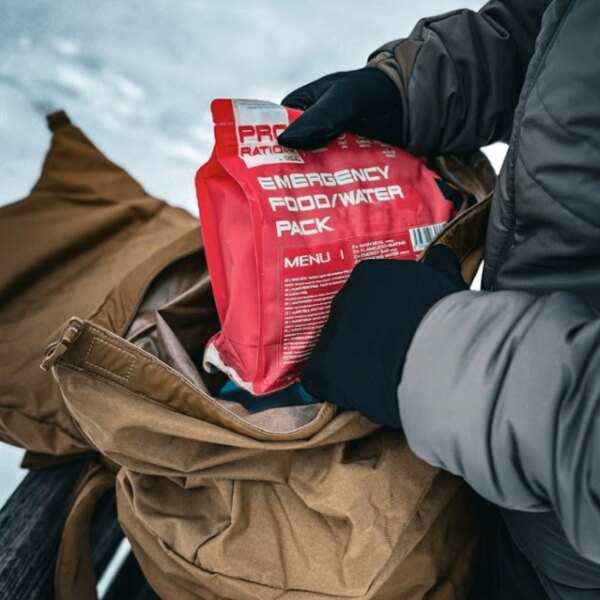
Emergency food supply Pro Ration in the evacuation backpack. Lightweight, compact, and ready for immediate use.
How Much Food and Water Do You Actually Need?
Plan for full independence over three days:
🔸 Water – At least 3 liters per person per day, totaling 9 liters per person for 72 hours:
- 2 liters for drinking
- 1 liter for minimal hygiene and cooking (if needed)
🔸 Food – Around 2,000–2,500 kcal per adult per day. Prioritize shelf-stable, easy-to-prepare, low-water and low-energy options.
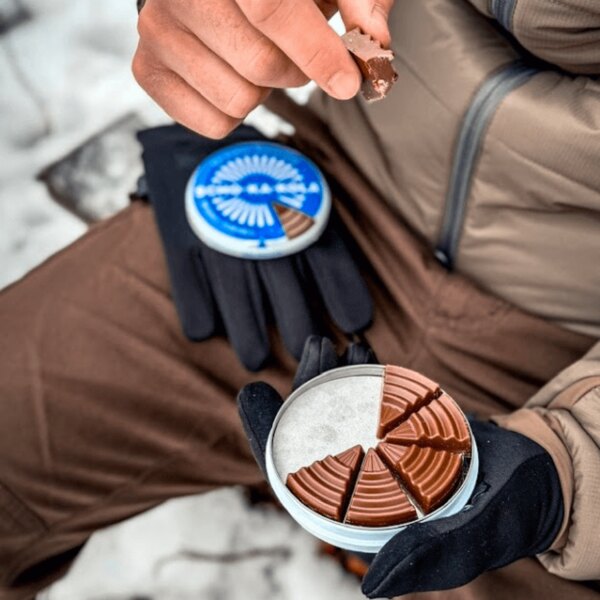
Energy chocolate Scho-Ka-Kola in practical metal packaging. Perfect for evacuation kits or trips to nature.
Choosing Emergency Food: What Really Matters
Emergency rations aren’t about fine dining—but that doesn’t mean they should taste like cardboard. Key criteria:
- Shelf Life – Ideally 5+ years, no refrigeration needed
- Calories – Enough to support normal function and stress response
- Ease of Prep – No cooking or just hot water required
- Compactness – Small, space-efficient packaging
- Psychological Comfort – Familiar meals help in unfamiliar situations
Recommended Emergency Foods from Rigad
We’ve handpicked products that meet emergency survival standards—and also make sense in terms of quality.
🔲 Emergency Food & Water PRO Ration Box
🟤 Emergency Food & Water PRO Ration Box
Compact supply for 3 days – 23 servings of food and packaged water in one box. Long-lasting, zero complexity. Suitable for home, office, and car.
Ultimate Tactical Ration – Half Day Menu II
🟤 Ultimate Tactical Ration – Half Day Menu II
Half-day military style ration: ready-to-eat meal, snacks, drinks. Just open and eat. Ideal for evacuation backpack or field testing.
NRG-5 Trek’n Eat – Emergency Food Ration
🟤 NRG-5 Trek’n Eat – Emergency Food Ration
High-calorie emergency ration (2300 kcal) packed into minimal space. Can be eaten directly, no cooking required. Shelf life up to 20 years.
Scho-Ka-Kola – Energy Chocolate
🟤 Scho-Ka-Kola – Energy Chocolate
Dark chocolate with a dose of caffeine. Quick energy and a moral boost. A proven classic for body and mind.
Durable Rye Bread in a Can Trek’n Eat
🟤 Durable Rye Bread in a Can
Real bread in a sealed can. Suitable as a supplement to MRE and as a psychological anchor in uncomfortable conditions.
Grower’s Cup Coffee on the Go – Brazil
🟤 Grower’s Cup Travel Coffee – Brazil
Coffee prepared directly in the packaging. Just add hot water. Maintains the comfort of the usual ritual even where everything else looks different.
Everyday Foods That Work for Emergencies
These store-bought basics complement your emergency kit:
- Rice, pasta (note: needs longer cooking)
- Instant porridge and soups
- Oats (quick, nutritious)
- Canned legumes (no cooking required)
- Nuts, dried fruit, protein bars
- Honey (long shelf life, versatile)
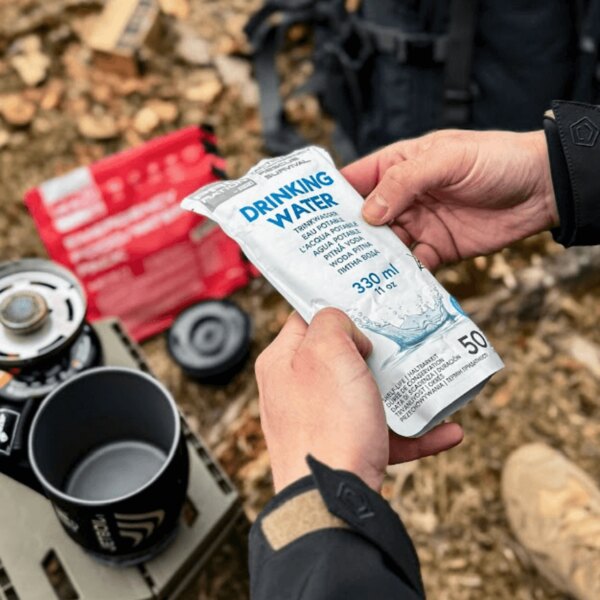
Drinking water in a practical 330 ml package – part of an emergency survival kit, evacuation, or evacuation backpack.
Common Mistakes in Food Storage
❌ Moisture – Leads to mold and spoilage
❌ Poor Packaging – Paper-wrapped items like flour or oats attract pantry pests
❌ Bad Location – Forgotten food behind the cupboard expires unnoticed
❌ No Rotation – Unused stock sits past expiration unnoticed
💡 TIP: Store in dry, dark places—plastic bins with lids work well. Mark expiration dates directly on the packaging with a marker.
Water: Storage, Filtration, Pitfalls
Water is often underestimated—but it’s absolutely critical.
📌 What to prepare:
- Canisters or PET bottles of drinking water (rotate every 6 months)
- Water purification tablets
- Water filters (for natural water sources)
💡 TIP: Also keep "grey" water—for flushing or hand washing. Doesn’t need to be drinkable.
| Method | Advantage | Disadvantage |
|---|---|---|
| Tablets | Lightweight, compact | Changes the taste of water |
| Filters (Sawyer, Katadyn) | No chemicals, good taste | Higher initial cost |
| Boiling | Reliable | Requires fuel, time |
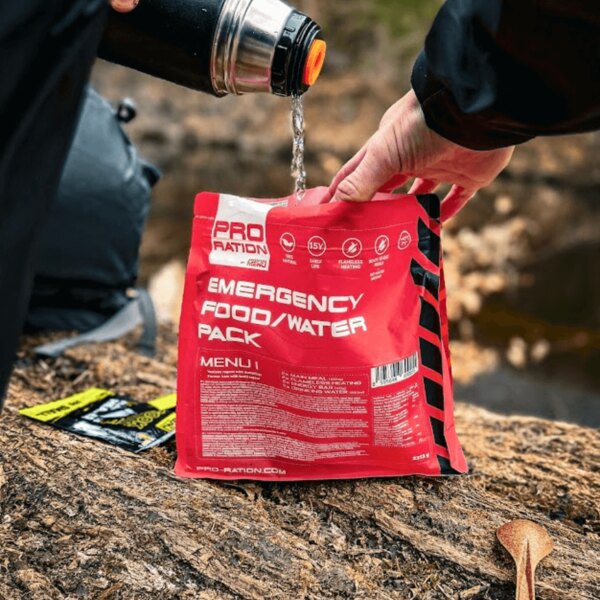
Preparation of emergency food in the field. Durable Emergency Food/Water Pack with the option to add hot water directly in the package.
Practical Tips
- Store food both at home and in your go-bag—you won’t have to decide what to pack during a crisis
- Test your emergency food in advance—some MREs taste great, others not so much
- Label expiration dates and rotate stock regularly
- Don’t underestimate morale boosters—coffee or chocolate can do more than 1,000 calories in a dry biscuit
📌 What constitutes a basic emergency supply?
- ✅ Food for 3 days (~7500 kcal / person)
- ✅ Water min. 9 liters / person
- ✅ Water purification tablets or filter
- ✅ Can opener, spoon, mug, matches
- ✅ Small heat source (stove or heater)
- ✅ Psychological comfort: coffee, chocolate
Final Thoughts
Preparing 72 hours' worth of food and water isn’t doomsday prepping—it’s peace of mind.
Having a food box, a few water containers, and the confidence that you can take care of yourself for three days is basic modern readiness.
📚 Series: 72 Hours of Self-Sufficiency
-
Part 1:
Why We Must Be Prepared
Introduction to 72-hour self-sufficiency. What can happen and why it makes sense to be prepared. -
Part 2:
Food and Water
What food and how much water to have at home. Practical instructions and recommended products. -
Part 3:
Home Equipment and Hygiene
How to survive a power outage: lighting, heating, cooking, and basic healthcare. -
Part 4:
Evacuation Backpack and Checklist
What to pack when you need to leave home in a few minutes. Complete list and recommendations.
Readers are further interested
